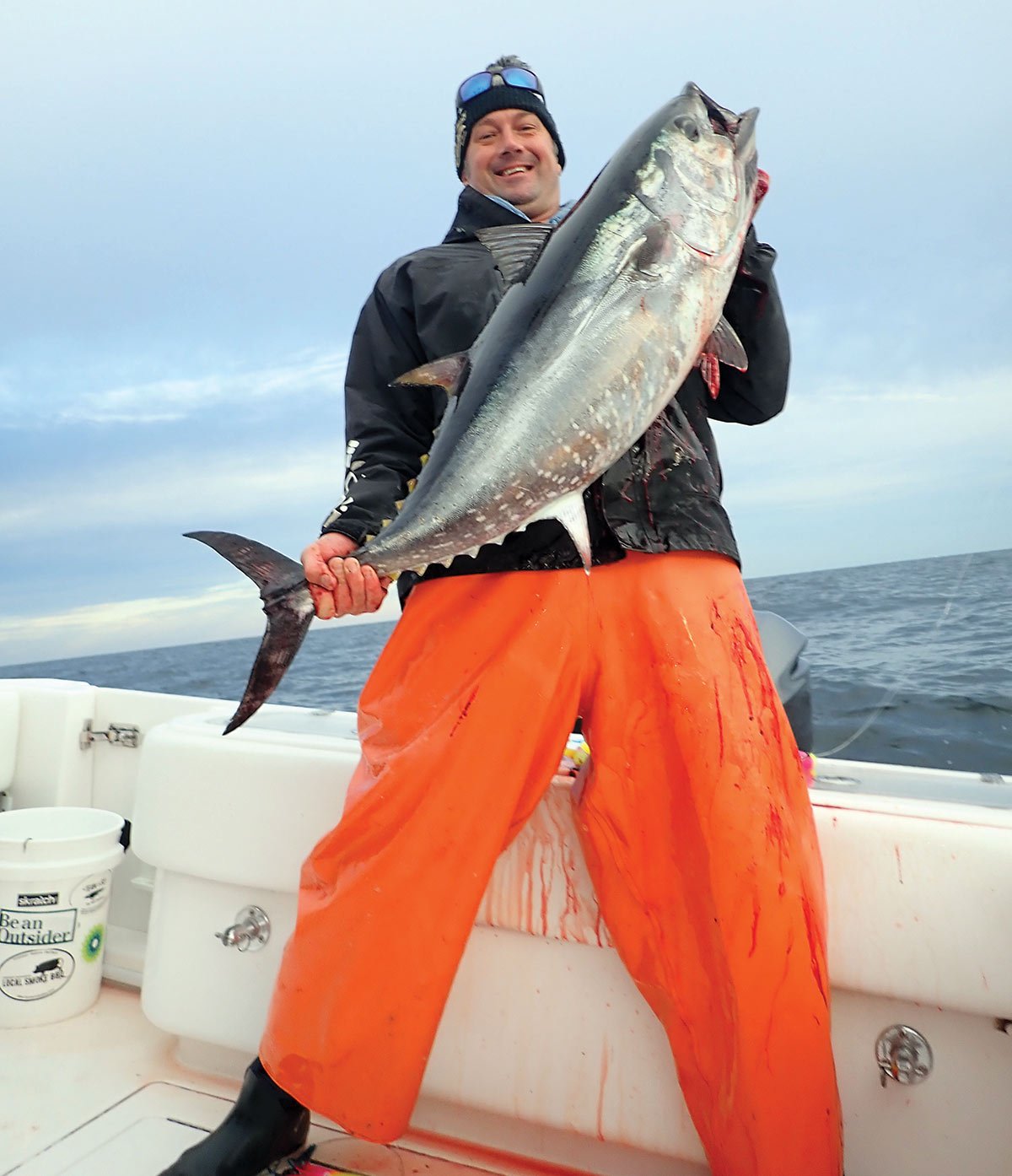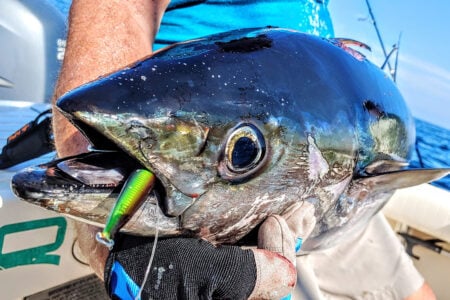
Bluefin tuna will be making their return to the Northeast region soon enough; how’s your spread looking?
With a bombastic bluefin bite wreaking havoc on midshore trollers the past few years, boaters from small craft to sportfishers have been in on the game. When bluefin tuna come around, subtle changes in the spread can make the difference between success and failure. If you’re marking fish, but they seem skittish to bite, here are a few tips to get a bluefin to pounce.
Turning the Corner
Many times tuna will be following the commotion of a spread, but the redundant speed and action of the lures sometimes just isn’t enough to trick them into a bite. To combat repetitiveness, try zig zagging your track or make fairly frequent turns to drop the lures down. As you make a turn, the lures will fall, then catch up again once the lines become taut again behind the boat. Many times, that little switch in speed where baits fall then quickly surge gets the bluefin to bite.
Bump It in and Out
Along the same lines as turning the corner, bumping the boat down a couple knots for a few seconds, then get back up to regular speed, achieves the same goal of jumping the baits. Repeat the action in intervals every few minutes.
Dropping Way Back
Sometimes bluefin are too keen to strike at lures close to the prop wash. Finicky bluefin seem to like spreader bars and ballyhoo way, way, way back in the spread. So if hits aren’t coming aplenty, let line out on the spreaders, cedar plugs and ballyhoo and drop the spread back.
Pick the Right Color
If squid are a predominant bait, a pink or cucumber squid bar will ride right. Blue and white Ilanders or Joe Shute skirts draped over ballyhoo always seem to produce. Black and purple skirt colorings also seem to catch the eye of bluefin tuna.
Get Outside
The new craze of sidetracker bars from Chatter Lures makes putting spreader bars outside the main spread on smaller boats easy without having to utilize outriggers. Simply adjust the lever under the bar to allow the bar to track away from the spread as you troll up to speed. The commotion on the edges of the spread make for easy pickins as bluefin hone in on the unfortunate “school” of bait that has drifted away from the main pod.
This bluefin season, if you find tuna are ghosting your offerings, switch up your technique or tactics a bit with a proper tweak and see if your luck changes.
| HMS PERMIT |
|---|
| If you plan on fishing for tuna, billfish and sharks this season, be sure to get your Highly Migratory Species (HMS) permit first. The Atlantic HMS Angling Permit costs $26 and covers your boat and all anglers aboard. You may request that an initial or renewal application package be mailed to you by calling the NMFS Customer Service Center at 888-872-8862. Once you receive the package, complete it by hand and mail it to the address provided. NMFS will then mail your permit to you. You can also purchase online at hmspermits.noaa.gov. |




